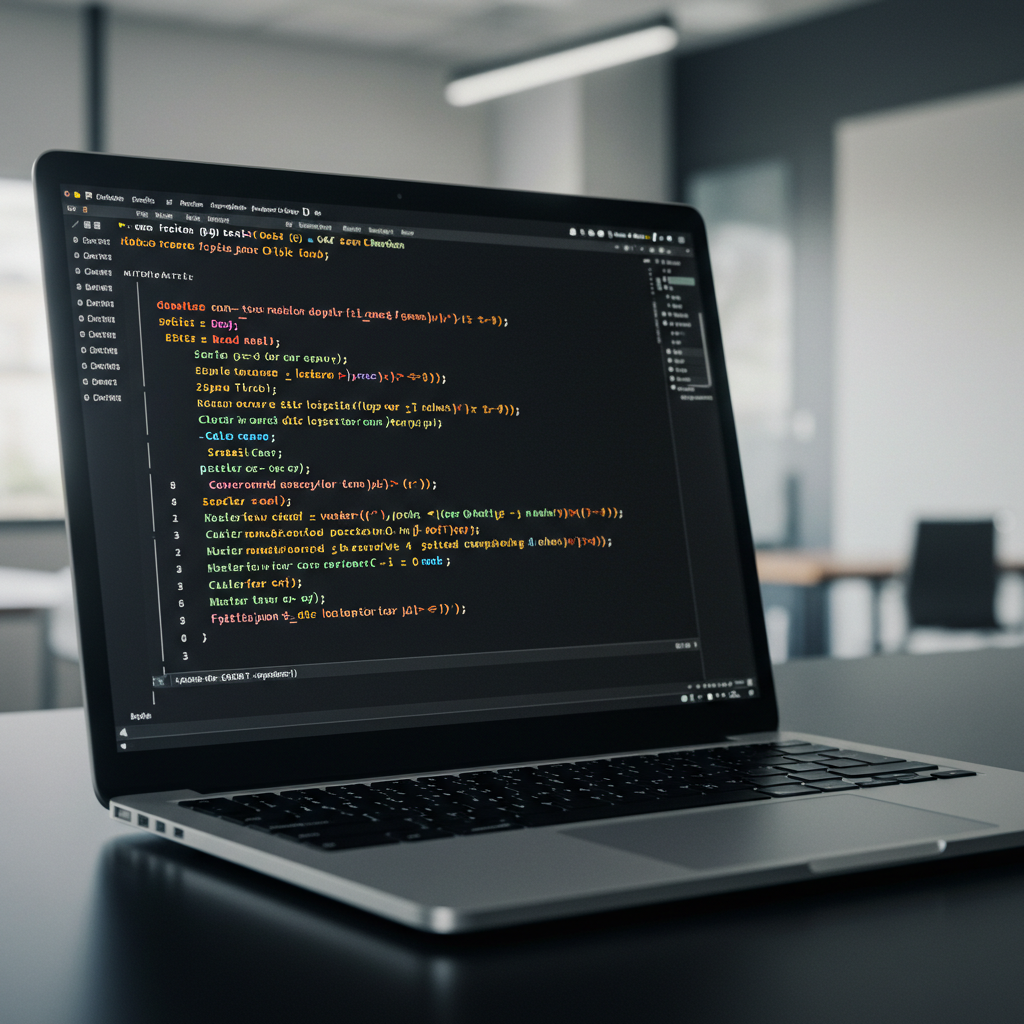
Python, the versatile and readable programming language, has taken the world by storm. Its clean syntax and extensive libraries make it a favorite for beginners and a powerful tool for seasoned developers. Whether you’re just starting your coding journey or looking to deepen your understanding, this guide will walk you through fundamental, intermediate, and advanced Python concepts. Buckle up, and let’s explore the fascinating world of Python!
Attention:Click here if you need a money making website for your business!
Part 1: Laying the Foundation – Beginner Python Concepts
This section is for those taking their first steps into the realm of programming with Python. We’ll cover the absolute essentials that form the bedrock of your coding skills.
1. Getting Started: Installation and Your First Program
Before you can write any Python code, you need to have Python installed on your system. Head over to the official Python website (python.org) and download the latest stable version for your operating system. Once installed, you can use a text editor or an Integrated Development Environment (IDE) like VS Code, PyCharm (Community Edition), or Jupyter Notebook to write and run your code.
Let’s write our first Python program, the classic “Hello, World!”:
print("Hello, World!")
Save this code in a file named hello.py and run it from your terminal or IDE. You should see the output:
Hello, World!
Congratulations, you’ve written and executed your first Python program!
2. Variables and Data Types: Storing Information
Variables are like containers used to store data in your program. In Python, you don’t need to explicitly declare the data type of a variable.
name = "Alice" # String
age = 30 # Integer
height = 5.75 # Float
is_student = False # Boolean
print(name)
print(age)
print(height)
print(is_student)
Python supports several fundamental data types:
- Integer (
int): Whole numbers (e.g., -5, 0, 10). - Float (
float): Numbers with decimal points (e.g., 3.14, -0.5). - String (
str): Sequences of characters enclosed in single or double quotes (e.g., “Hello”, ‘Python’). - Boolean (
bool): Represents truth values, eitherTrueorFalse. - List (
list): Ordered, mutable sequences of items (e.g.,[1, 2, "apple"]). - Tuple (
tuple): Ordered, immutable sequences of items (e.g.,(1, 2, "banana")). - Dictionary (
dict): Unordered collections of key-value pairs (e.g.,{"name": "Bob", "age": 25}). - Set (
set): Unordered collections of unique elements (e.g.,{1, 2, 3}).
3. Operators: Performing Actions
Operators are symbols that perform operations on variables and values. Python provides various types of operators:
- Arithmetic Operators:
+(addition),-(subtraction),*(multiplication),/(division),//(floor division),%(modulo),**(exponentiation). - Comparison Operators:
==(equal to),!=(not equal to),>(greater than),<(less than),>=(greater than or equal to),<=(less than or equal to). - Assignment Operators:
=(assign),+=,-=,*=,/=, etc. (compound assignments). - Logical Operators:
and,or,not(used to combine or negate boolean expressions).
4. Control Flow: Making Decisions
Control flow statements allow you to execute different blocks of code based on certain conditions.
-
if,elif,elsestatements: Used for conditional execution.score = 75 if score >= 90: grade = "A" elif score >= 80: grade = "B" elif score >= 70: grade = "C" else: grade = "D" print(f"Your grade is: {grade}") -
forloops: Used to iterate over a sequence (like a list or string).fruits = ["apple", "banana", "cherry"] for fruit in fruits: print(fruit) -
whileloops: Used to repeatedly execute a block of code as long as a condition is true.count = 0 while count < 5: print(count) count += 1
5. Functions: Organizing Your Code
Functions are reusable blocks of code that perform a specific task. They help in organizing your code and making it more4 modular.
def greet(name):
"""This function greets the person passed in as a parameter."""
print(f"Hello, {name}!")
greet("David")
You can also define functions that return values:
def add(x, y):
"""This function returns the sum of two numbers."""
return x + y
result = add(5, 3)
print(f"The sum is: {result}")
Part 2: Stepping Up – Intermediate Python Concepts
Once you have a solid grasp of the basics, you can move on to more advanced concepts that will make your code more efficient and powerful.
1. Working with Data Structures: Lists, Tuples, Dictionaries, and Sets in Depth
We briefly touched upon these data structures earlier. Now, let’s delve deeper into their functionalities and use cases.
-
Lists: Mutable sequences that allow you to add, remove, and modify elements. List comprehensions provide a concise way to create lists based on existing iterables.
numbers = [1, 2, 3, 4, 5] squared_numbers = [x**2 for x in numbers] # List comprehension print(squared_numbers) # Output: [1, 4, 9, 16, 25] -
Tuples: Immutable sequences, often used to represent fixed collections of items.
-
Dictionaries: Efficient key-value stores, useful for representing data with labels.
student = {"name": "Eve", "age": 22, "major": "Computer Science"} print(student["name"]) # Output: Eve student["city"] = "New York" # Adding a new key-value pair -
Sets: Collections of unique elements, useful for operations like finding unions, intersections, and differences.
set1 = {1, 2, 3, 4} set2 = {3, 4, 5, 6} union_set = set1.union(set2) # {1, 2, 3, 4, 5, 6} intersection_set = set1.intersection(set2) # {3, 4}
2. Functions: Advanced Features
Beyond basic function definitions, Python offers powerful features:
-
Arbitrary Arguments (
*argsand**kwargs): Allow you to pass a variable number of arguments to a function.*argscollects positional arguments into a tuple, while**kwargscollects keyword arguments into a dictionary!def print_all(*args): for arg in args: print(arg) print_all(1, "hello", 3.14) def print_info(**kwargs): for key, value in kwargs.items(): print(f"{key}: {value}") print_info(name="Frank", age=28) -
Lambda Functions (Anonymous Functions): Small, single-expression functions that can be defined inline.
square = lambda x: x**2 print(square(5)) # Output: 25 -
Decorators: A way to modify or enhance functions in a reusable manner.
def my_decorator(func): def wrapper(): print("Something is happening before the function is called.") func() print("Something is happening after the function is called.") return wrapper @my_decorator def say_hello(): print("Hello!") say_hello()
3. File Handling: Interacting with Files
Python provides built-in functions for reading from and writing to files.
# Writing to a file
with open("my_file.txt", "w") as f:
f.write("This is some text.\n")
f.write("Another line of text.")
# Reading from a file
with open("my_file.txt", "r") as f:
content = f.read()
print(content)
# Reading line by line
with open("my_file.txt", "r") as f:
for line in f:
print(line.strip()) # Remove leading/trailing whitespace
The with open(...) statement ensures that the file is properly closed even if errors occur.
4. Modules and Packages: Organizing Your Projects
Modules are Python files containing definitions and statements. Packages are collections of modules organized in a directory hierarchy. They help in structuring larger projects and reusing code.
You can import modules using the import keyword:
import math
print(math.sqrt(16)) # Output: 4.0
from datetime import datetime
now = datetime.now()
print(now)
You can also create your own modules and packages to organize your code.
5. Error Handling: Dealing with the Unexpected
Errors are inevitable in programming. Python’s try...except block allows you to handle exceptions gracefully.
try:
result = 10 / 0
except ZeroDivisionError:
print("Error: Cannot divide by zero.")
except Exception as e:
print(f"An unexpected error occurred: {e}")
finally:
print("This block will always be executed.")
Part 3: Reaching New Heights – Advanced Python Concepts
This final section delves into more sophisticated Python features that are crucial for building complex applications and libraries.
1. Object-Oriented Programming (OOP): Structuring Your Code with Objects
OOP is a programming paradigm that revolves around the concept of “objects,” which are instances of “classes.” Classes define the blueprint for creating objects, encapsulating data (attributes) and behavior (methods).
class Dog:
def __init__(self, name, breed):
self.name = name
self.breed = breed
def bark(self):
print("Woof!")
my_dog = Dog("Buddy", "Golden Retriever")
print(my_dog.name) # Output: Buddy
my_dog.bark() # Output: Woof!
Key OOP principles include:
- Encapsulation: Bundling data and methods that operate on that data within a single unit (the class).
- Inheritance: Creating new classes (subclasses or derived classes) based on existing classes (superclasses or base classes), inheriting8 their attributes and methods.
- Polymorphism: The ability of objects of different classes to respond to the same method call in their own way.
- Abstraction: Hiding complex implementation details and showing only the essential information to the user.
2. Iterators and Generators: Efficient Data Handling
-
Iterators: Objects that allow you to traverse through a sequence of elements one at a time. They implement the
__iter__()and__next__()methods. -
Generators: Special functions that produce a sequence of values using the
yieldkeyword. They are memory-efficient as they generate values on demand rather than storing the entire sequence in memory.def even_numbers(n): for i in range(0, n + 1, 2): yield i for num in even_numbers(10): print(num)
3. Context Managers: Managing Resources Efficiently
Context managers, often used with the with statement, ensure that resources (like files or network connections) are properly managed (e.g., closed) after their use. They implement the __enter__() and __exit__() methods.
We saw an example of a context manager with file handling (with open(...)).
You can also create your own context managers!
4. Concurrency and Parallelism: Executing Tasks Simultaneously
For computationally intensive tasks, you might want to leverage concurrency (managing multiple tasks that make progress without necessarily running simultaneously) or parallelism (actually running multiple tasks at the same time, often using multiple CPU cores).
-
Threading (
threadingmodule): Allows you to run multiple threads within a single process. Useful for I/O-bound tasks. -
Multiprocessing (
multiprocessingmodule): Allows you to create and manage multiple processes, each with its own memory space. Suitable for CPU-bound tasks to take advantage of multiple cores. -
Asynchronous Programming (
asynciomodule): Enables you to write concurrent code using theasyncandawaitkeywords, often used for network operations.
5. Metaclasses: The “Classes of Classes”
Metaclasses are a more advanced concept that allows you to control the creation of classes themselves. By default, the type metaclass is used. You can define custom metaclasses to modify class creation behavior, such as enforcing naming conventions or adding specific attributes to all instances of a class. This is a powerful but often less frequently used feature.
6. Working with Libraries and Frameworks: Expanding Python’s Capabilities
Python’s strength lies in its vast ecosystem of libraries and frameworks that extend its functionality for various tasks:
- Data Science: NumPy, Pandas, Matplotlib, Seaborn, Scikit-learn.
- Web Development: Django, Flask.
- Scientific Computing: SciPy.
- GUI Development: Tkinter, PyQt.
- Networking: Requests, Socket.
Mastering how to use these libraries effectively is crucial for building real-world applications.
Conclusion: A Continuous Journey
Learning Python is a continuous journey. As you progress from beginner to advanced concepts, you’ll unlock new possibilities and gain the ability to tackle increasingly complex problems.
Don’t be afraid to experiment, build projects, and explore the vast resources available in the Python community.
The more you practice and delve deeper, the more proficient and confident you’ll become in this powerful and versatile programming language.
Keep coding, keep learning, and enjoy the journey!



